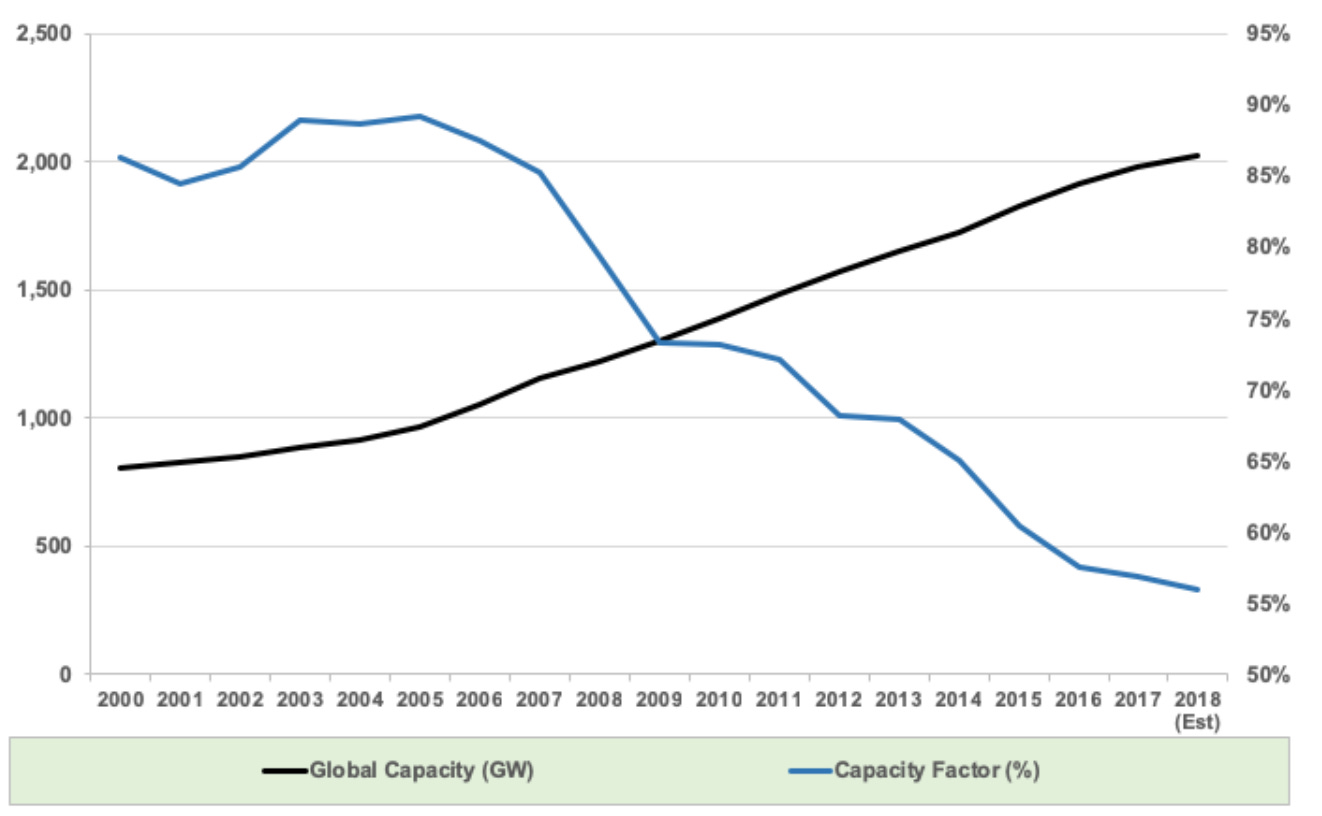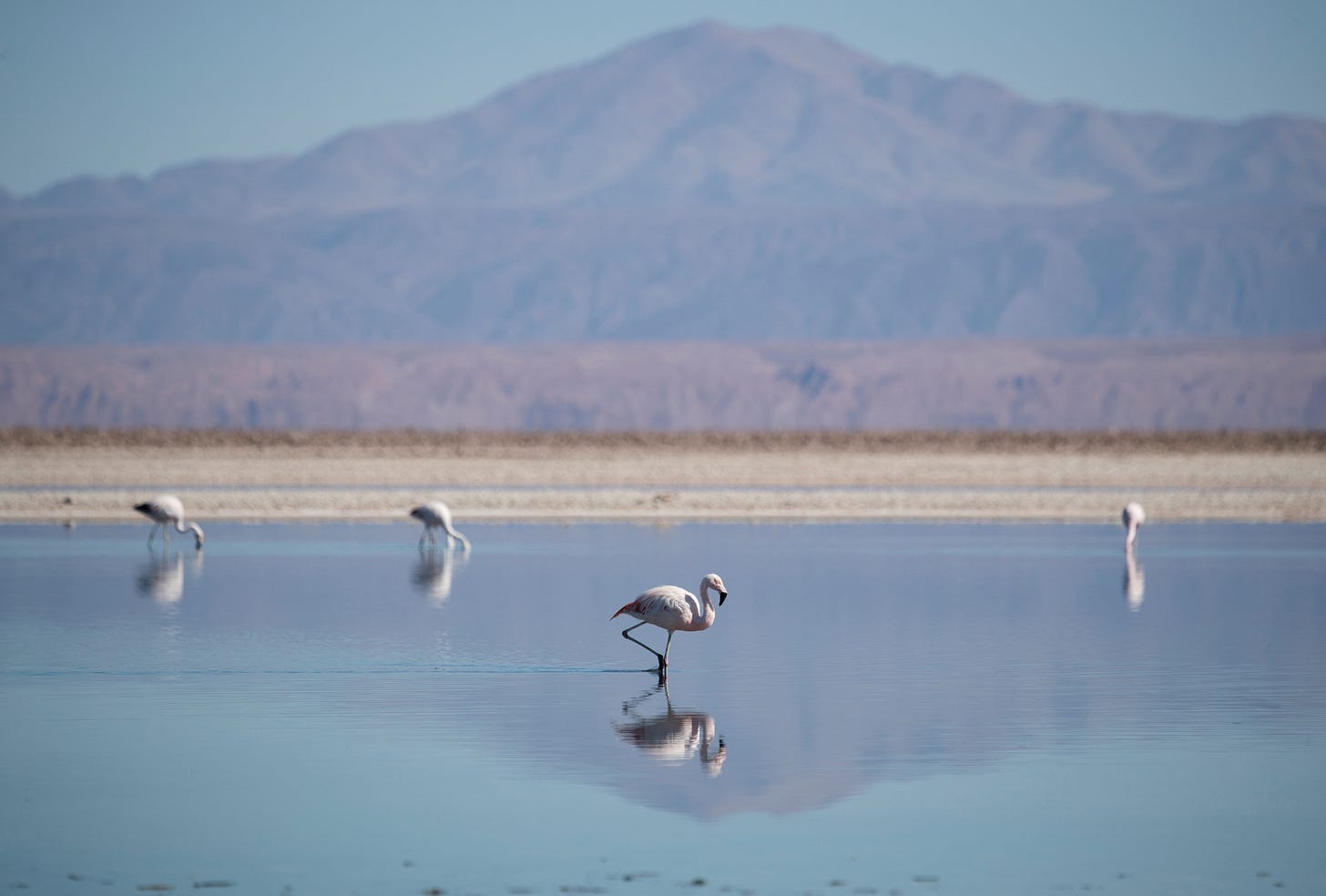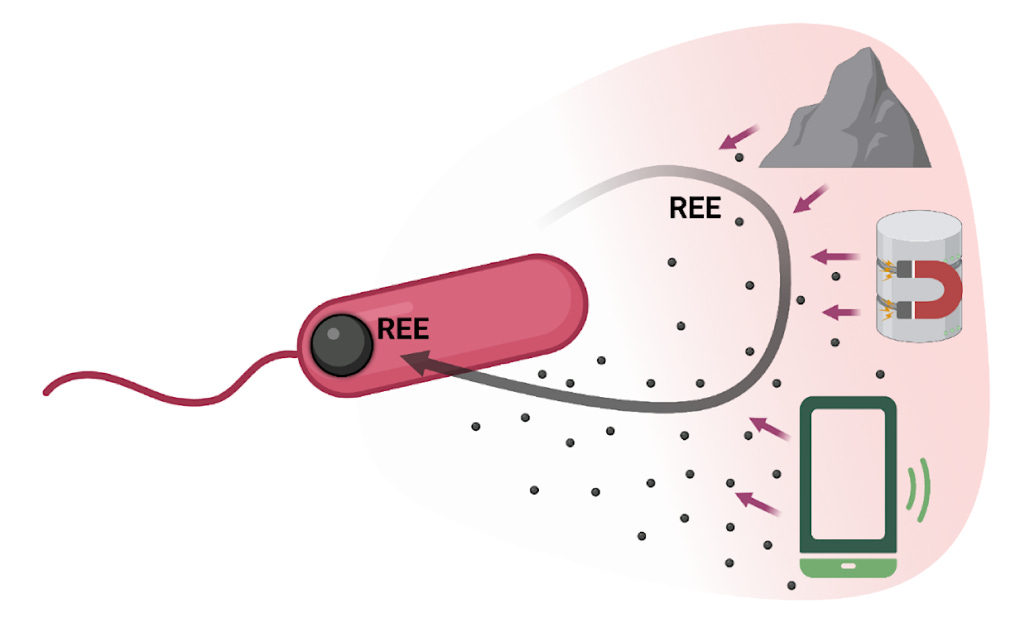Extracting metals and minerals is expensive, even though its demand continues to grow, and it is projected to keep growing. Biomining could be the big shift toward sustainable mineral extraction our society needs to meet rising metal demands.
But talk is cheap. Rather than just tell you this, our community is putting our collectively-governed money where our mouth is.
But why biomining? Why not a different field of research? First, let us tell you why conventional mining is on a trajectory toward failure in the first place - and why that’s a problem. And then we’ll explain what it is about biomining that, in our eyes, makes it a successor worth committing to.
Why biomining?
Mining metals and extracting minerals continues to be expensive, well into the information age. Demand isn’t projected to stop growing any time soon, either. Not only is this an issue purely from a financial perspective, but the extraction and processing of these metals are also aggravating a range of environmental issues, including climate change, loss of biodiversity, and health impacts. Added to which, every new mining operation that gets established hinders our transition to a circular economy - which, long-term, is going to be essential for maintaining a healthy planet and minimising climate change.
This creates a significant challenge: how can the growing global demand for metal goods and services be satisfied without exerting undue pressure on Earth's ecological limits, or potentially even surpassing it?
Predictions on rare metal needs
To answer this, it might help to take a step back so we can survey the financial / investment landscape as a whole, since from there we can make better-informed predictions as to where certain fields (including metal extraction) are likely to innovate toward.
In many countries, climate change has become a partisan issue, with political parties taking opposing stances (for various reasons). Fortunately, despite presenting as a divisive issue, the pressure of climate change has been steadily transforming the landscape of mineral resource investments as a whole; even if the socio-politics side of things may be dragging its heels in terms of taking meaningful action.
That is to say, major financial institutions across the West are increasingly divesting from thermal coal and shifting their focus toward the energy transition economy.

Source: Global Coal Plant Tracker, BP World Statistics, IEEFA Calculations.
Whilst coal power capacity has increased, year on year actual usage and utilization of coal plants has steadily declined; demonstrating the shift away from coal by major utilities and power producers - and hence financial institutions divesting from coal and moving toward cleaner energy sources.
For example, the global electric vehicle fleet has expanded by over 50% annually for the past decade, reaching 5.1 million vehicles in 2018 - a growth rate that could meet the international target of 100 million by 2030. Likewise, low-carbon energy technologies made up around 30% of global energy investments in 2019. Global lithium production may need to double in the next decade to sustain this level of growth in the electronics industry.
But there’s a catch; becoming sustainable as a society isn’t as simple as swapping from fossil fuels to electronics. Which is disappointing, but at this stage, not terribly surprising - eco-friendly initiatives haven’t ever been easy.
So what is this catch? Well, all these wondrous low-carbon energy technologies generally require significantly more metal to produce the same power output as fossil fuel technologies. Photovoltaic power can demand up to 40 times more copper, and wind power up to 14 times more iron, compared to fossil fuel combustion. Over 20 energy transition metals such as iron, copper, aluminium, nickel, lithium, cobalt, platinum, silver, and rare earth metals, are expected to face increased market pressure as the production of low-carbon energy technologies intensifies.
There’s a catch to the clean energy revolution - becoming sustainable as a society isn’t as simple as swapping from fossil fuels to electronics.
…On the surface, this doesn’t present as an issue - the rare and expensive minerals that make up the screen you’re viewing this on aren’t kicking out carbon dioxide or other greenhouse gases, are they? And plenty of energy providers in the West offer affordable, 100% green-energy tariffs!
So if it’s not how we’re using our electronics, and if using them day to day doesn’t have to affect our climate, then what’s the problem? Well, the issue doesn’t lie with the consumer - at least, not anymore. Instead the problems - both environmental and ethical - starts much higher up the production chain. So what does that mean? Well…
Mineral extractions is a social and environmental issue
Similar to how China has developed its reputation for sweatshops and creating mass consumer goods, metals used in the West are not extracted from our home soil. Instead, mining of metals and rare earth minerals often takes place in developing countries.
For instance, a significant portion of the world's cobalt, a common essential ingredient for batteries used in electric vehicles and stationary energy storage, is sourced from the Democratic Republic of Congo (DRC).
Is this not the modern day equivalent to sitting on top of a gold mine? Would this arrangement not bring much needed wealth and prosperity to the nation? In theory, taking none of the country’s social history into account, maybe. The reality however does not even come close.

Funding call: Why we’re focusing on biomining
·
6 August 2024
The DRC, still recovering from prolonged armed conflict, faces so many serious issues that the lived reality of those working in the mines is a far cry from this utopian fantasy. The many women - and frequently children as well, as child labour is not outlawed - who earn their living working in or around mines receive lower wages and less status compared to their male and adult counterparts. There is no legal recourse for this.
To make matters worse, these workers are often without adequate safety equipment. As it stands, due to inadequate preventative measures - such as the absence of water drilling and proper exhaust ventilation - many cobalt miners suffer from dangerously high levels of toxic metals in their bodies and face elevated risks of respiratory illnesses, heart disease, and cancer.
The DRC doesn’t suffer alone. In Chile, the unchecked and widespread extraction of minerals - namely lithium - has destroyed countless natural habitats in Atacama Dessert, and will continue to do so as demands rise. Lithium is extracted from Atacama salt flats using brine as an extraction method - a method developed in the 1950s whereby brine, i.e. saltwater, is evaporated to get the rare mineral. A perfectly terrible match - since Altacama is already an arid area, drying this region out for lithium extraction cannot be done without widespread changes to the ecosystem.
Workers in these mines are often without adequate safety equipment. And due to inadequate preventative measures, many also face elevated risks of respiratory illnesses, heart disease, and cancer.
The pattern is so clear in fact that E&T, in collaboration with SpaceKnow, was able to produce clear, quantitive studies detailing the extent that brine-extracted lithium has already taken a heavy environmental toll on the area's ecosystem.
But even from a glance, the effects are clear - flamingos have already left the region because of water scarcity, and indigenous populations in the area have already migrated, having been left with little other choice.

In Atacama, Chile, lithium mining has been stirring fights over flamingos owing to widespread habitat devastation. Source: Reuters
"It is a paradox in Chile. On one side we are talking about decarbonisation, [to mitigate] climate change and the loss of biodiversity. And on the other side we exploit the environment for resources to power the electric mobility revolution that supports climate change," says Cristina Dorador, a Chilean biologist who studies microbial life in the Atacama desert for Engineering and Technology.
Bear in mind this was over 7 years ago, back when the water crisis in the Salar de Atacama basin had already been declared in 2017 by the General Water Directorate.
Likewise in China, extraction of rare minerals has resulted in chemical pollution from ammonium sulfate and ammonium chloride, threatening rural groundwater aquifers and rivers/streams.
Establishing more mines to mean soaring demands will only exacerbate these problems. A more sustainable approach than any of the above would instead involve extracting these valuable minerals from our mountains of e-waste, as well as making much better use of lower density ores - reducing the need for new resource extraction and lessening environmental impacts. But is this possible?
We think so.
Biomining - a biotech solution
Biomining, in short, is a type of biotechnology in which we make use of organisms to extract metals from ores or waste materials - and it could help with the climate crisis and reduce the carbon footprint of minerals mining. Yet despite these advantages, certain drawbacks hinder its widespread commercial applications: namely metal selectivity, low recovery and lengthy processing times.
As a result, mining companies have not invested in biomining extensively. In this article published by Nature, author David Johnson contends that although metal recovery through biomining may require extra accommodations, the overall economics could be favourable if environmental concerns are adequately addressed. For instance, traditional processing costs for low-grade copper deposits are estimated at around US$15–20 per tonne of ore, while on-site bioleaching could reduce these costs to just US$2–3 per tonne, making it not just better for the environment, but even an economically viable alternative.
To understand how such dramatic cost cuts could be achieved, we need to understand the underlying processes.

Source: Martinez-Gomez’ lab
Unlike conventional methods, rare earth elements (REEs) extracted through biomining can come from diverse sources limited not just to ores, but also magnet swarf, and electronic waste.
So how can microbes mine?
The first step for any mineral extraction and purification process is to grind the source material and isolate the target minerals from everything else. There are a number of ways to do this: acid, for instance, is commonly used to dissolve metals. And it just so happens that acids produced natively by microbes offer an environmentally friendly and cost-effective alternative to industrial grade options.
Researchers at Idaho National Laboratory in Idaho Falls, for example, have focused on Gluconobacter oxydans, an acid-producing bacterium found in garden soil, fruits, and flowers, as a potential candidate for microbial mining. of rare earth elements (REEs). Reed et al., a lab working with G. oxydans at the Idaho National Laboratory, found that G. oxydans secreted a gluconic acid mixture that was better at leaching rare metals than pure gluconic acid alone: “We think there are other things being produced besides the gluconic acid,” says Vicki Thompson, a chemical engineer at the lab.
To be clear, G. oxydans doesn’t specifically target REEs. Instead, it produces acid to dissolve phosphates from the environment for its own DNA synthesis - and releasing REEs happens to be a beneficial byproduct that can be used in electronics manufacturing.
G. oxydans secretes a gluconic acid mixture better at leaching rare metals than pure gluconic acid alone.
“…There are other things being produced besides the gluconic acid.”
Since the initial discovery of the microbe, researchers have engineered various strains to produce a more acidic solution that is more effective at leaching rare metals by disrupting genes involved in phosphorus uptake. This genetic change allowed an improvement of 5-fold compared to the wild type.
After this leaching step, separating the target minerals from other minerals, such as calcium and iron, is necessary. Take for instance Martinez-Gomez’s group at the University of California, Berkeley, who have been engineering Methylobacterium extorquens to improve the microbe’s ability to collect neodymium and other metals from pulverised magnets. The lab improved this capability by three times, and the metals obtained by this method are 98,8% pure. This so far represents their achievements just in the lab - Martinez-Gomez has since co-founded RareTerra to commercialise this accumulation and separation method for lanthanides.
Countless other microbes have demonstrated the ability to collect minerals, including Pseudomonas putida and Methylacidiphilum fumariolicum, as well as chemolithotrophic iron/sulfur (Fe/S)-oxidising microbes. The latter of which have gained significant attention in biomining research due to their ability to thrive in highly acidic, metal-rich environments and even fix CO₂ from the atmosphere during mining. Similarly, certain photosynthetic bacteria have been shown to absorb minerals, presenting yet another alternative for CO₂ fixation during mining.
What can society do to make biomining more widespread?
Looking to previous biomining start-ups, the answer seems clear to us: get more of this research out of the lab and into the real world.
Today, there are numerous biomining research efforts underway globally, and significant progress is being made. However, to truly advance these innovations beyond the lab and into real-world applications, we need more translational funding support for research projects that have moved beyond the discovery and initial proof-of-concept phases and now require bridge funding to further validate the technology. This is why the ValleyDAO community has committed to fund this area with $50-200k per project through its recent funding call.
This application is open to all; meaning if you have a project idea based on prior results you’ve achieved in the lab, we want to hear from you. Specifically, if it’s related to one or more of the following areas:
- High throughput screening platforms for identifying novel biomining microorganisms
- REE extraction from secondary resources like e-waste and mine tailings
- Enzymatic solutions for mineral ore breakdown and metal extraction
- Alternative carbon sources for chemoheterotrophic organisms in REE bioleaching
- Mixed culture systems combining chemoautotrophic and chemoheterotrophic organisms
- Specialized bioprocess and bioreactor designs for biomining/leaching
- Low pulp density cultivation techniques
- Development of microorganisms resistant to toxic heavy metals, particularly cadmium, silver, mercury and uranium.
- Improved biocatalysts for enhanced microorganism-mineral interactions
- Biobased membrane for extraction
- Any similar fields to the above
Then we want to connect with you!
You can apply for $50-200k in research funding (and translational support!) here.
You’ll also find an FAQ section further down on the application page. We’ve made the application simple and shouldn’t take you more than 15 minutes to fill out.
If this is of interest to you or someone in your network, come join our community by joining our Discord, or else by following our socials on X and LinkedIn.
We look forward to hearing from you!












